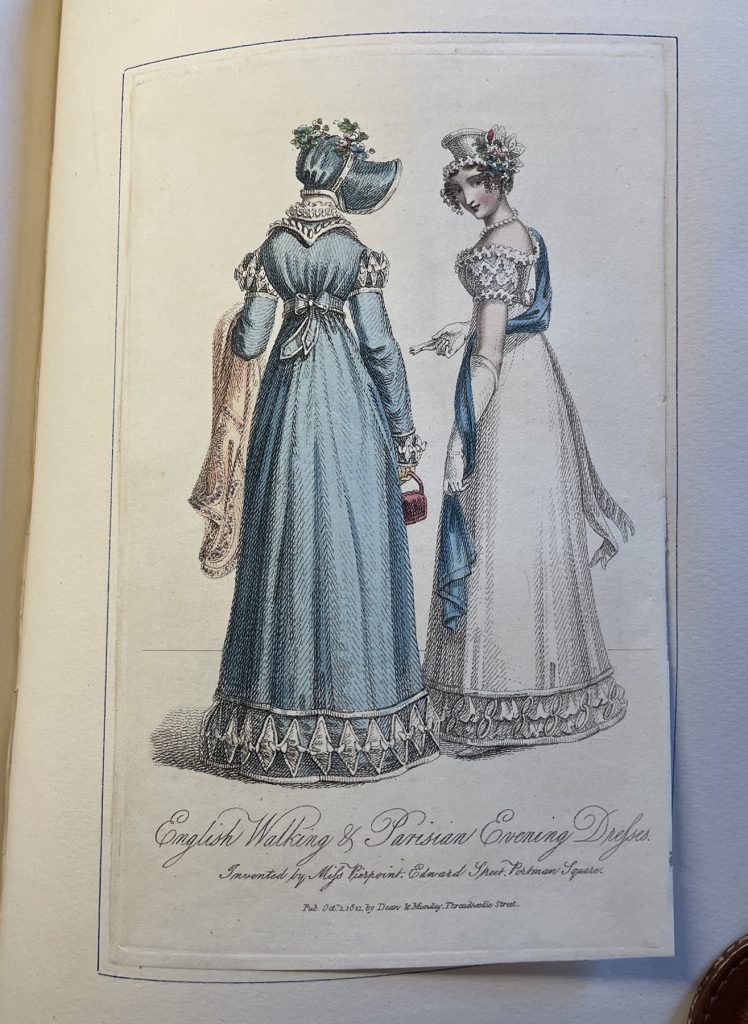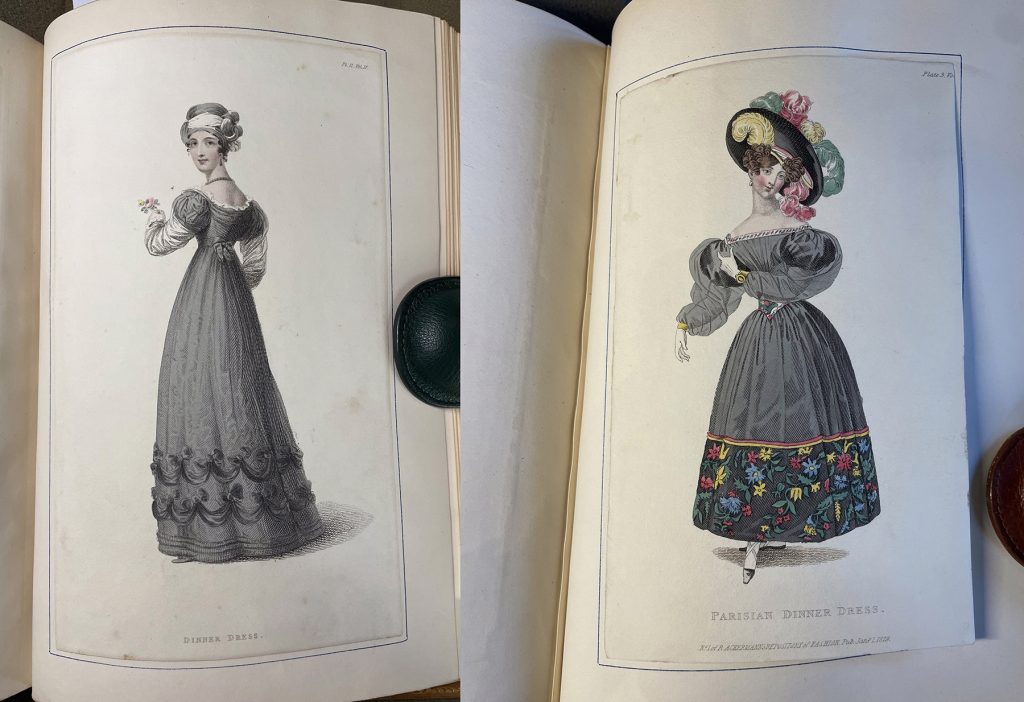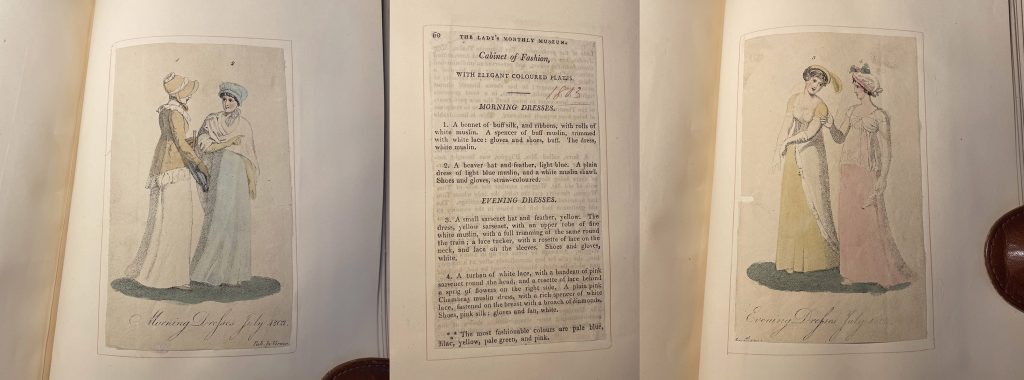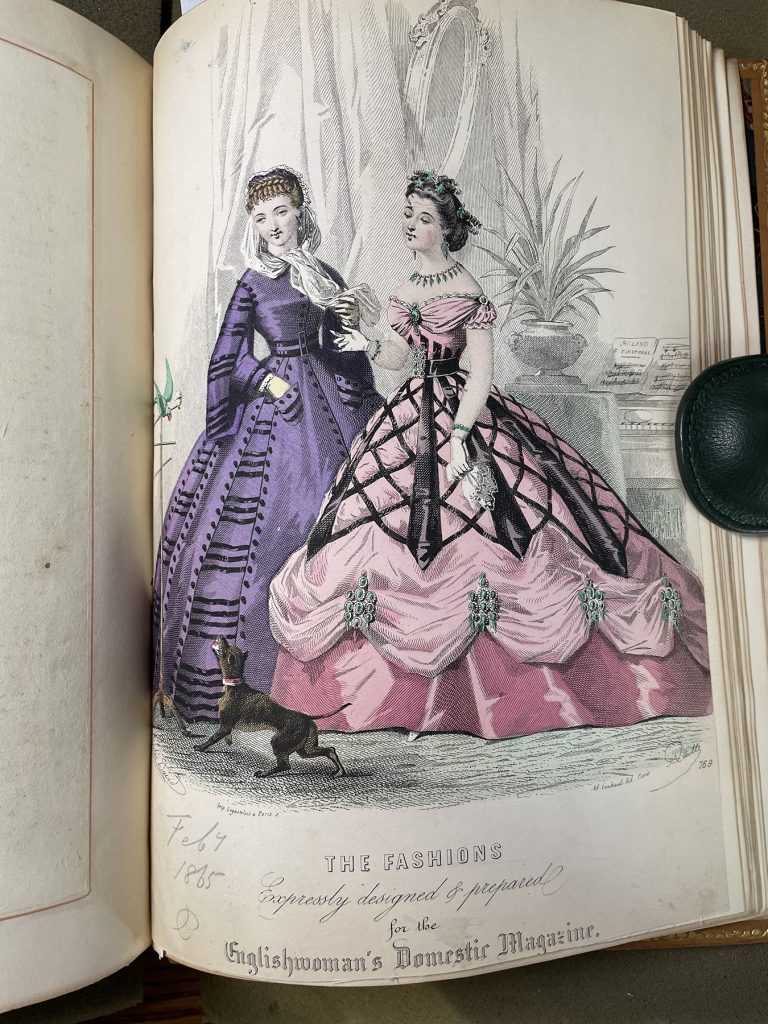By Maggie Parfitt, Visitor Services Coordinator
One of the best things about working at the MHS is when a coworker sends a link to a catalogue listing with a “you’d like this” message. Recently, I was sent the motherlode of fashion plates in the MHS collection in our 1872 edition of Robert Chamber’s The Book of Days. While there’s too many to include here, I wanted to share some of my favorites, along with some fashion plate background, and some of the ways researchers reference them to support textual research. They’re not just for looking at! (But the looking is also fun).
First things first: what is a fashion plate? Fashion plates, as the name suggests, are illustrations of fashionable dress published in ladies’ magazines and journals starting around the 1780s and continuing through the 19th century. Armed with these illustrations women would travel to their trusted mantua-maker/dressmaker for a new gown inspired by the style in the plate. Some fashion plates even went so far as to include names of milliner’s shops, or the name of the dressmaker who invented the design.


When preserved in their original published contexts fashion plates often include written descriptions detailing fabric types, accessories, and garment names. Sources like these are key for filling in visual gaps in the written record. They help material culturalists and dress historians puzzle together disparate pieces of information like fabric advertisements in period newspapers or mentions of specific garments in letters, diaries, and journals. With all these pieces we can start identifying extant garments more completely and assemble robust theories of the dress of the past.

While a useful tool, it’s important to remember fashion plates were primarily marketing. They reflect a dressmaker’s interpretation of the silhouettes and details in style at the moment, and aren’t necessarily indicative of actual garments. Think of the difference between runway shows and red carpets. While both are modern examples of “high fashion,” red carpet styles have been edited down by individual taste. This does mean you can find fashion plates that are A LOT – with seemingly every accessory piled on there.

I hope you enjoyed a quick look at just a few of the fashion plates in the MHS’s collection. While meant to inform the fashions for 19th century society – the upper classes of England and France, they provide great insight into the shapes, silhouettes, and accessories of all classes. I can imagine women of the time pursuing fashion plates and picking and choosing their favorites, much like we do today!

